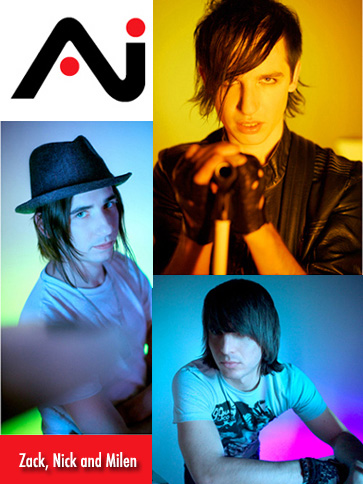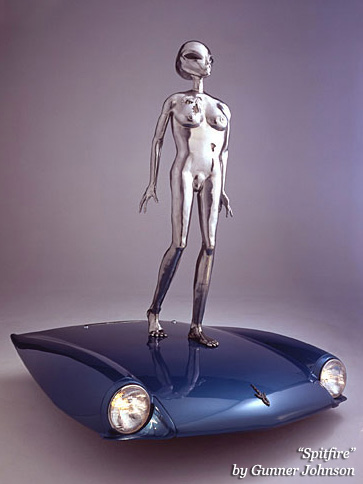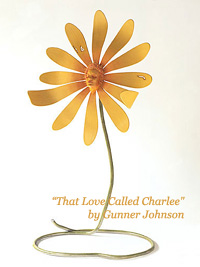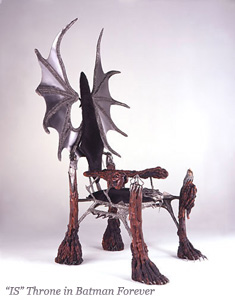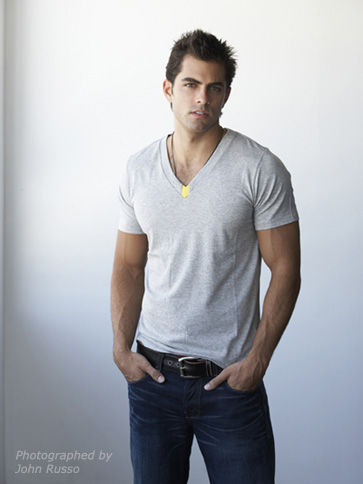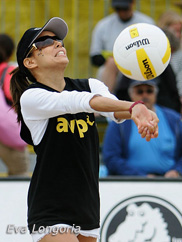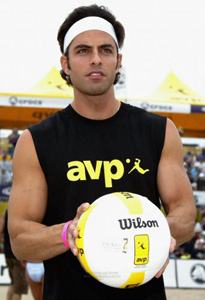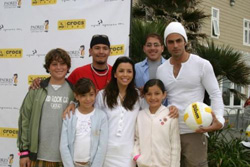Sarena Traver – Racecar Driver and Fine Jewelry Designer
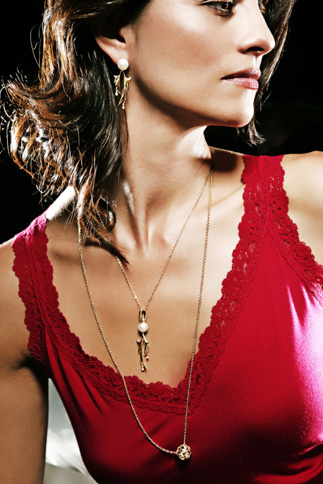 Moms, don’t worry if your daughters want to be racecar drivers. JeTalia’s head designer, Sarena Traver, makes racing cars and creating fine jewelry look risk-free. This mother of two incorporates the fluid motion of racing in her couture line by creating jewelry that moves! JeTalia is stunning and unique. Sarena believes that jewelry is a statement of a woman’s personality, evoking strength, beauty, and individuality. Her four collections, Cage, Synchro, Apex, and T2, are versatile and timeless. Shareeka Epps, named one of the Top five Most Talented Newcomers in Film 2006 (“2007 Spirit Awards”), wore JeTalia; and Rebecca Gayheart is also a fan of the chic line. Moms, don’t worry if your daughters want to be racecar drivers. JeTalia’s head designer, Sarena Traver, makes racing cars and creating fine jewelry look risk-free. This mother of two incorporates the fluid motion of racing in her couture line by creating jewelry that moves! JeTalia is stunning and unique. Sarena believes that jewelry is a statement of a woman’s personality, evoking strength, beauty, and individuality. Her four collections, Cage, Synchro, Apex, and T2, are versatile and timeless. Shareeka Epps, named one of the Top five Most Talented Newcomers in Film 2006 (“2007 Spirit Awards”), wore JeTalia; and Rebecca Gayheart is also a fan of the chic line.
It is no surprise that Sarena would follow in her father’s footsteps. Her father owned a gem business, and she was his apprentice at just seven years old. That, combined with innate creativity, led to JeTalia. Sarena graduated from Gemological Institute of America. She draws her inspiration from surfing, racecar driving, and traveling; and the freedom and movement in her own life is revealed in her designs.
I try to incorporate movement in some way, whether it’s sliding pearls or sliding cage that holds a pearl inside, which is free to move and roll around. So because I like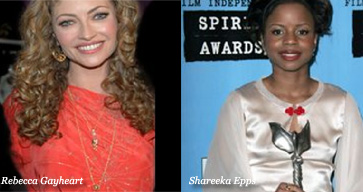 racing and the movement involved with that, that’s what I try to do with my designs. racing and the movement involved with that, that’s what I try to do with my designs.
— Fine Jewelry Designer Sarena Traver of JeTalia —
JeTalia is a very unique name. How did you come up with that name?
JeTalia came from both of my children’s names. My son’s name is Jet, and my daughter’s name is Talia.
Did it take you a while to come up with that, or did you try other names first?
I considered other names like last names, my last name, but ultimately it came to using the kids’ names. It was more personal.
Well, how did you get involved with designing jewelry?
Growing up as a child, I would sit down with my father—he was a gem dealer—and color sort his stones and help him weigh them. I have always been involved with gems from the age of seven. As a result, I just kind of rolled into this progression of jewelry design and started another career within marketing. After I had my kids, I decided I wanted a change; so I went to school for jewelry design at GIA, and here I am.
Tell me about your jewelry.
It’s fine jewelry. I mostly work with 18-carat yellow gold, platinum, white gold, diamonds, and pearls.
If someone were to ask you to describe your jewelry in two or three sentences, how would you do that?
I would describe the majority of the pieces as whimsical, more feminine, free flowing, and a lot of movement. Movement is really key for me, and just something to make you feel beautiful.
Who is your demographic?
My demographic for JeTalia Jewlery would be 35- to 55- year old business-minded women, very successful, love to be feminine, and sexy. That’s pretty much it.
Where could someone buy your jewelry?
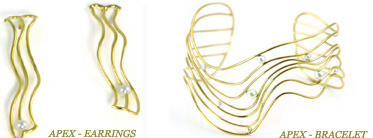 Well, right now just online. www.Jetalia.com. But in the future, higher end department stores, beauty salons, and boutiques. Well, right now just online. www.Jetalia.com. But in the future, higher end department stores, beauty salons, and boutiques.
What are some of your price points?
JeTalia’s price points range from $1,000 all the way up $18,000.
When did you get involved with racing cars?
I got really involved with racing cars the last few years and my husband does it. We have a great time together going out to the track and sharing that. It’s a lot of fun.
How long have you been doing that?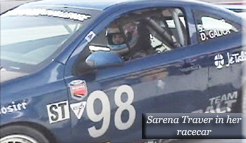
I’ve been racing cars for about three seasons now.
Is a season like a few months out of the year?
A season is approximately six to seven months out of the year. So there is some down time, and you can choose to do other races in between; but if you’re with a series, it’s pretty much six to seven months.
Well, that is pretty dare-devilish, wouldn’t you say?
Yeah, especially when you’re a mom and you’re doing other things, too—I try to fit it all in. But when you love it, you just make it happen.
What’s it like being a racecar driver?
It’s fun! It’s an adrenaline rush. It’s a good time.
Tell me about the rush.
When you’re going at high speeds and you have something go wrong with your car, and you crash, there’s no other feeling like it, when you’re heading for a cement wall at 80 miles an hour. And it hurts, but you get back in the car and do it again. You know you have a whole separate family at home on the tracks, and then you come home and you have your own family. It’s probably just the competitiveness that I like as well.
Are there different kinds of races?
There are different series that you could get involved with. There’s open wheel, which is what I do, Formula Mazda cars. I just did the Koni Challenge, which is a whole other series. There are lots of levels, depending on your budget, what you enjoy, and how fast you want to go. There are different types of tracks, too. So there’s really a little bit of everything for everyone.
Are there really a lot of women racing?
Unfortunately, there are very few women who race.
You’re definitely in the minority. Do you find that you may be considered somewhat of a role model to young girls because there are so few women racecar drivers?
Yes, it’s fun. When I take my kids to school, all the parents and teachers are really supportive of what I do. They love that I race cars. They had a career day [last Spring], and they asked me to come in and talk to all the kids—and they absolutely ate it up! They had so much fun with it. It was really interesting to go there and see all the little girls wanting to try on my helmet, wanting to hold my trophies. They really loved it, and I think reaching out to them and telling them that they can do any sport that they want. It doesn’t have to be racecar driving. It could be anything, and I think it really inspired them. It really touched a chord and, hopefully, HOPEFULLY, I turn a little girl into a little racecar driver one day.
What kind of car do you race?
I race Formula Mazda cars, which is an open wheel car. And [just recently], I had a race [where I drove] a Chevy Cobalt, which is a sedan.
Do these companies sponsor you for your races?
JeTalia is my sponsor.
How does JeTalia fit into racecar driving?
I try to incorporate movement in some way, whether it’s sliding pearls or a sliding cage that holds a pearl inside, which is free to move and roll around. And because I like racing and the movement involved with that, that’s what I try to do with my designs—right now with the [current] collections—the next phase of collections might be something totally different.
As the designer of JeTalia, what has been your highest high?
Seeing the pieces completed. It’s such a process from start to finish, with getting your education within that field, and taking and applying your knowledge, doing your designs and working with people on those designs. And just creating the piece, and seeing the end product—that’s a pretty good high I’d have to say.
What was your lowest low?
The lowest low was probably designing my website. That was quite the process, going through multiple web designers, and just the stress involved. It’s a whole other process—very time-consuming and very frustrating at the same time. So you just hang in there and you get through it, and eventually it will happen … and it did—that was another high moment. When it was completed and we were live on the Internet, it was a great moment, but there were definitely some highs and lows.
How many years have you been doing JeTalia?
Probably close to two years.
So you’re new, you’re basically almost an upstart, really. As an upstart, do you really feel that it has been a great amount of success up to this point?
Oh, definitely! You know the whole point is that you have to take baby steps, and be ready for a great opportunity for any moment. It’s been good moving forward in a slow manner, and finally being ready for that opportunity.
What advice would you give to someone that might aspire to do what you’re doing as a fine jewelry designer? Is there anything special that you could offer to help him or her?
Just do your research—lots of research in every field, and every aspect. It will pay off in the end. And be patient because it can’t happen overnight. Just stick with it.
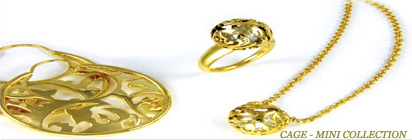
What was your greatest moment as a racecar driver?
It would have to be getting a podium, getting a trophy out of the race, and having that great feeling that you just kicked a lot of butt from the racetrack, and had a really good time doing it, and you worked really hard at it, and it’s a good moment when you can do that.
What’s involved in training for a race?
There are different areas. There’s the physical, where you could train and diet—all of that to prepare. But I would say the most important thing is the mental [preparation]—really focusing on what you want and visually preparing for that. Seat time in the car is very important too—getting out there and actually putting laps together, working on that and having it just be perfect, every time.
Since you’re a minority in this sport, I guess you’re mostly racing against men. Is there ever more than one female in a race?
Sometimes, but it’s rare. I really haven’t had too many opportunities where there’s another woman. My last race, I brought by my co-driver, and she’s great to race with. She’s been around for a very long time. She’s 63 years old and she’s been racing for 30 years. She’s definitely a wonderful mentor to me in the racing field, and she is really supportive. I have a blast racing with her. But other than that, I don’t really come in contact with too many other women on the track.
Do you race only locally, or do you travel to other states?
I travel. But there is another series that I do, and then there’s the western series that travels just this region primarily.
What’s your lowest low when racing?
It would have to be when you crash a car—when you hit a cement wall, or tire wall, and you can’t continue in the race—or you total your car. Now that’s a pretty bad low.
And that has happened to you? Were you hurt?
Yeah. It’s not fun. You get hurt, but you recover, and you get back in the car because you love it. It’s absolutely addicting!
To learn more about Sarena Traver and JeTalia, visit her website at www.jetalia.com.
Interviewed by Kaylene Peoples
Interviewed by Kaylene Peoples
Transcribed by Tamara Baskin
|
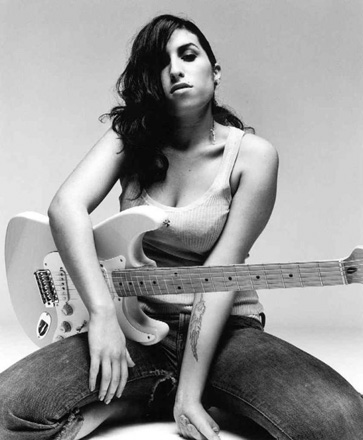 A few weeks ago I was arguing with a friend from across the pond on which of us would claim Amy Winehouse for our own. I argued since she already had a boyfriend, it was too late for her to play the lesbian card. She countered that American imperialists have stolen enough women from England. I know what you’re thinking. Why fight over just another alcoholic twenty-three-year-old Jewish female Motown singer from London? O. K., maybe that wasn’t what you were thinking. This isn’t another cookie cutter chanteuse , and that’s the point. She’s not only reinterpreting the sound of a forgotten era, but she has the emotional sincerity to back it up. Our standoff was ended with the news of her marriage to Blake Fielder-Civil. I guess I’ll have to start wooing a Pipette.
A few weeks ago I was arguing with a friend from across the pond on which of us would claim Amy Winehouse for our own. I argued since she already had a boyfriend, it was too late for her to play the lesbian card. She countered that American imperialists have stolen enough women from England. I know what you’re thinking. Why fight over just another alcoholic twenty-three-year-old Jewish female Motown singer from London? O. K., maybe that wasn’t what you were thinking. This isn’t another cookie cutter chanteuse , and that’s the point. She’s not only reinterpreting the sound of a forgotten era, but she has the emotional sincerity to back it up. Our standoff was ended with the news of her marriage to Blake Fielder-Civil. I guess I’ll have to start wooing a Pipette.